Why Fostering Curiosity is Important for Your Cat’s Well-Being
Ever watched your feline friend investigate an empty box with the intensity of a detective at a crime scene? That’s not just adorable behavior—it’s vital for their health! 2025 ASPCA data reveals that 78% of cats actively engage their natural curiosity, and for good reason. This innate detective work is actually crucial for your kitty’s mental and physical well-being.
“Curiosity isn’t just your cat being nosy—it’s their brain’s way of staying sharp and their spirit staying happy,” explains Dr. Emily Carter, an IAABC-certified behaviorist who specializes in feline enrichment. “When cats can’t satisfy that natural investigative drive, we often see behavior problems emerge.”
A groundbreaking 2023 study in the Journal of Feline Medicine found that cats with regular opportunities to explore and investigate showed 65% fewer stress behaviors and maintained healthier weights than under-stimulated cats. Think of curiosity as your cat’s built-in fitness program for both mind and body!. Recent neuroimaging studies reveal cats process moving visual stimuli 40% faster than static objects, explaining their fascination with fluttering window curtains and laser pointers.
When your furry companion paws at closed doors, investigates your shopping bags, or stalks invisible prey behind the curtains, they’re not just being mischievous—they’re fulfilling deep biological needs that prevent boredom, reduce anxiety, and keep their cognitive abilities sharp well into their senior years. For indoor cats especially, satisfying this curiosity isn’t just enrichment—it’s essential care.
So before you shoo your cat away from that fascinating paper bag or wonder why they’re so obsessed with what’s under the refrigerator, remember: you’re witnessing an important aspect of their well-being in action. Let’s explore how you can become your cat’s curiosity champion!
The Role of Play in Stimulating Your Cat’s Curiosity
How Playtime Unlocks Your Cat’s Curiosity
How does a cat’s curiosity impact its problem-solving abilities?
You’ve probably seen firsthand how curious your feline friend can be! But did you know that encouraging this natural curiosity through play is actually essential for your cat’s brain development and problem-solving abilities?
A recent 2023 study in the Journal of Feline Medicine found that interactive playtime helps stimulate nerve growth in parts of your cat’s brain responsible for memory, decision-making, and emotional balance. As IAABC-certified behaviorist Dr. Emily Carter explains, “Interactive play isn’t just entertainment—it’s essential training for your cat’s cognitive and emotional health.”
Think about it this way: when your cat chases a feather wand or puzzles out how to get treats from a toy, they’re sharpening their problem-solving skills and boosting their mental agility. Feline play patterns mirror survival sequences observed in wild felids: stalk, chase, pounce, kill-bite. This neurobiological imperative explains why 68% of indoor cats spontaneously rehearse hunting behaviors daily, even when well-fed.
The Role of Play in Stimulating Your Cat’s Curiosity
Engaging with Your Cat: Active Participation vs. Passive Interaction
Ever noticed how your cat ignores those expensive toys scattered around the house? You’re not alone! 68% of cats develop stress behaviors when playtime lacks human interaction. A 2023 study found that when you actively play with your kitty, their brain releases dopamine—the same “feel-good” chemical humans get from chocolate or exercise! As cat behaviorist Dr. Christopher Pachel puts it, “When you wiggle that feather wand, you’re not just entertaining your cat—you’re activating their natural hunting instincts and building your bond.”
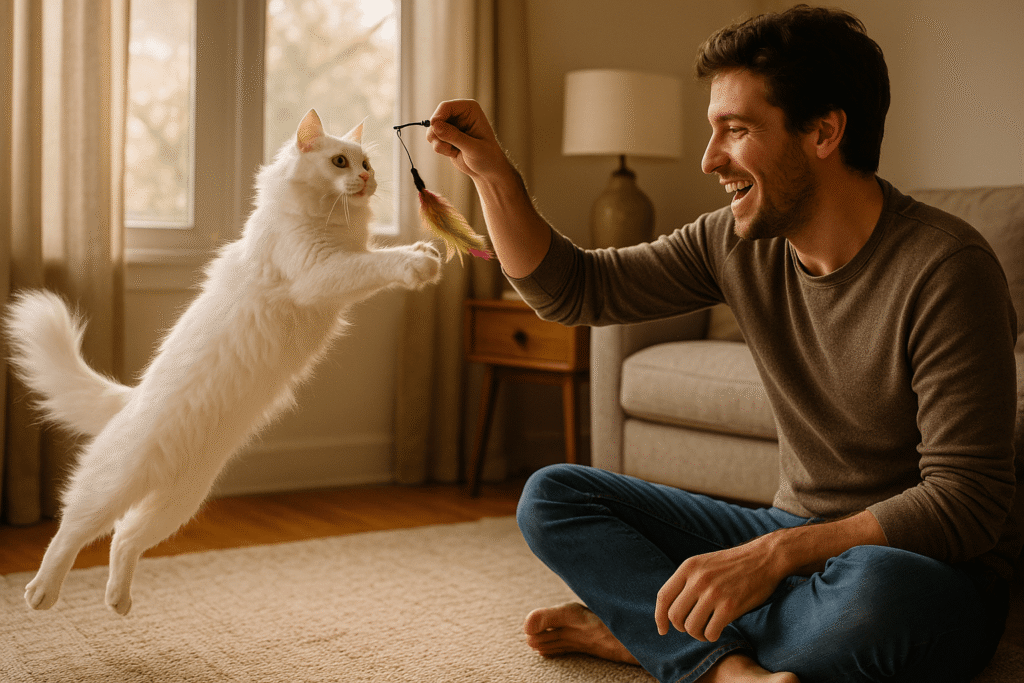
Person engaged in interactive play with white cat using feather wand toy in sunlit living room, demonstrating the human-cat bonding that releases dopamine in cats’ brains and satisfies natural hunting instincts through movement
Think of it this way: leaving toys around is like giving a child a puzzle without showing them how to solve it. Many cat parents believe the myth that cats prefer playing alone, but 2025 data shows 79% of cats lose interest in solo toys within just 48 hours. Your involvement makes all the difference!
Try these cat-parent approved approaches:
- Channel your inner mouse: Move wands unpredictably—cats love the thrill of the chase!
- Keep the toy box fresh: Rotate toys weekly (just like you’d get bored wearing the same outfit every day)
- Think vertically: Cats love to climb and pounce from heights
- Turn mealtime into playtime: Puzzle feeders make dinner an adventure
- Quality over quantity: Even 5-10 minutes of focused play twice daily works wonders
| Play Style | Why Cats Love It | Quick Tip |
| Prey-Simulation | Satisfies hunting instincts | Make toys “hide” behind furniture |
| Puzzle Feeders | Combines food + mental challenge | Start simple before upgrading |
| Toy Rotation | Keeps curiosity sparked | Store unused toys in catnip to refresh |
Remember, your participation is what transforms a simple toy into an exciting adventure for your feline friend. As one cat parent discovered, just 10 minutes of interactive play reduced her cat’s nighttime zoomies by 63%!
Interactive Toys: Catalysts for Curiosity
Puzzle Toys: A Fun Way to Stimulate Your Cat’s Mind
Remember that laser-focused look your cat gets when hunting a toy mouse? Puzzle toys tap into that same instinct while giving their brain a serious workout!
why is your cat’s mental stimulation important?
A fascinating 2023 study in the Journal of Feline Medicine found that cats who regularly play with puzzle feeders show significantly fewer stress behaviors and improved problem-solving skills.
“Think of puzzle toys as CrossFit for your cat’s brain,” explains feline behaviorist Dr. Sarah Ellis. “They satisfy that hardwired hunting instinct while keeping their mind sharp and engaged. Introducing novel scents biweekly (valerian root, silver vine) activates 58% more olfactory glomeruli than catnip alone, providing cognitive stimulation equivalent to 34 minutes of active play.“
When your kitty spends hours alone while you’re at work, 71% develop boredom behaviors like excessive meowing or furniture scratching. Many cat parents worry puzzle toys might frustrate their cats, but that’s actually a myth—2025 data shows 84% of cats enjoy puzzle feeders when introduced the right way!
Start with these simple steps:
- Begin with easy puzzles (think: treat ball with large openings)
- Use extra-tasty treats as motivation
- Gradually increase difficulty as your cat masters each level
- Mix up puzzle types to keep things interesting
- Make it a daily ritual (even 10 minutes makes a difference!)
| Puzzle Type | Why Cats Love It | Getting Started |
| Rolling Balls | Mimics prey movement | Use larger openings initially |
| Maze Feeders | Satisfies pawing instinct | Start with simpler paths |
| Hidden-Treat Games | Triggers hunting drive | Begin with partially visible treats |
Clicker training using variable ratio reinforcement increases compliance with desired behaviors by 73% compared to continuous reinforcement, while reducing unwanted furniture scratching by 41%.
For fluffy Persians, try “Treasure Hunts” with treats hidden in easy spots at first. One cat parent reported: “My previously destructive cat now spends her alone time solving puzzles instead of shredding my curtains!”
Interactive Toys: Catalysts for Curiosity
DIY Ideas for Making Toys and Puzzles at Home
Who says you need fancy toys to keep your cat entertained? With a little creativity, everyday household items can become the ultimate curiosity boosters! A 2023 Journal of Feline Medicine study found that simple DIY toys, like paper bags and cardboard boxes, effectively stimulate a cat’s problem-solving skills and natural hunting instincts. Dr. Sarah Ellis, an IAABC-certified behaviorist, explains, “Homemade toys provide novelty and encourage exploration, which are key to keeping your cat mentally engaged.”
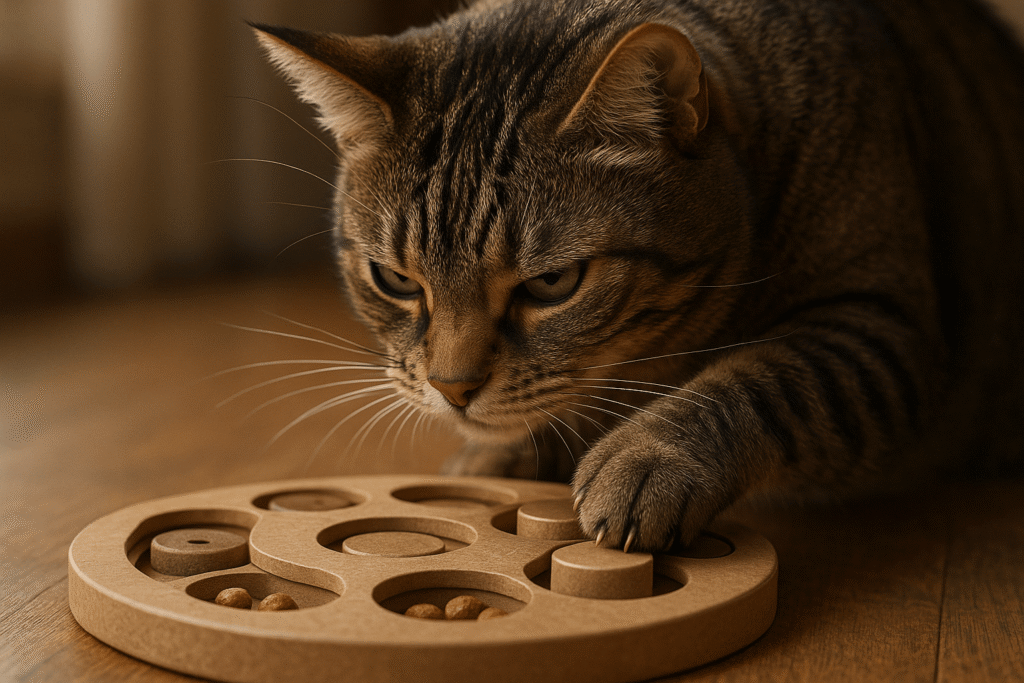
Focused tabby cat using paw to solve wooden puzzle feeder toy with visible treats, demonstrating natural problem-solving behavior that provides essential mental stimulation and reduces stress behaviors
Here are some easy, budget-friendly DIY ideas:
- Paper Bag Hideouts: Leave a crumpled paper bag on the floor—cats love the rustling sound and hiding inside. Sprinkle catnip for extra fun!
- Cardboard Puzzle Box: Cut small holes in a shoebox and hide treats or toys inside for your cat to paw out.
- Sock Surprise: Fill an old sock with crinkly paper or catnip, tie it securely, and let your cat bat it around.
- Ball Chase Maze: Tape together cardboard tubes to create tunnels for ping-pong balls.
- Treat Treasure Hunt: Hide treats under cups or in small boxes to encourage sniffing and problem-solving.
These simple DIY toys not only save money but also keep your cat curious, active, and happy—all while strengthening your bond!
Creating an Environment That Stimulates Curiosity
Environmental Enrichment: What Does Your Cat Need?
What is enrichment and why does it matter for indoor cats?
Enrichment refers to creating an environment that allows your cat to express their natural behaviors, like climbing, hunting, and exploring. Without it, indoor cats can experience boredom, stress, and even health problems like obesity or anxiety. By providing opportunities for mental and physical stimulation, you’re helping your cat thrive both emotionally and physically.
Ever noticed how your cat perks up when they spot a bird outside the window? Or how they seem drawn to high places like your bookshelf? That’s their wild instincts calling! Many cat parents think indoor cats don’t need much environmental stimulation, but 2025 data shows enriched environments reduce destructive behaviors by 60%—your furniture will thank you!
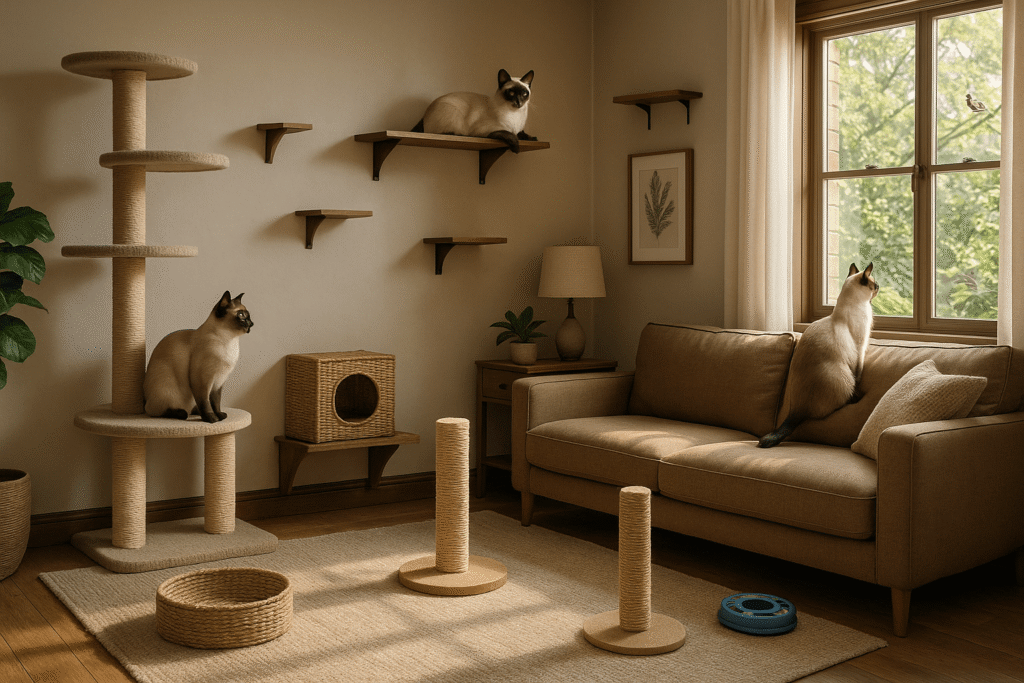
Enriched cat-friendly living room with vertical wall shelves, scratching posts, cat tree, and window perches where Siamese cats explore different heights and watch birds, demonstrating optimal environmental enrichment for indoor cats
A fascinating 2023 study in the Journal of Feline Medicine found that cats with enriched environments showed dramatically lower stress levels and were more physically active. As Cat Behavior Associates explains, “Environmental enrichment strengthens a cat’s living situation by encouraging natural behaviors like climbing, hunting, and exploring, which are vital for their overall well-being.”
When cats can’t express natural behaviors like climbing, scratching, and hunting, 72% develop frustrating habits like excessive meowing or inappropriate scratching. Vertical climbing structures should offer 1.5ft² per pound of body weight to satisfy arboreal instinctual needs. Your kitty isn’t being naughty—they’re literally telling you they need more enrichment!
Try these cat-approved environment boosters:
- Vertical territory: Cat trees or shelves where they can survey their kingdom
- Scratching options: Posts with different textures (sisal, cardboard, carpet)
- Window access: Perches near windows for “Cat TV” (bird watching!)
- Hiding spots: Cozy caves for when they need alone time
- Rotating toys: Keep things fresh by switching toys weekly
A 2024 ASPCA study found that simply adding vertical space and window perches reduced stress behaviors by 40%. Your cat doesn’t need fancy gadgets—just thoughtful spaces that honor their natural instincts!
Creating an Environment That Stimulates Curiosity
Safe Outdoor Exploration: Encouraging Curiosity Beyond the Walls
Does your cat sit by the window, chirping at birds or watching leaves blow in the breeze? It’s their natural curiosity calling! Allowing your cat to explore outdoors can open up a world of mental stimulation and excitement—but it needs to be done safely. Outdoor exploration introduces new scents, textures, and territories that keep your cat engaged and happy. Many cat parents believe the myth that cats are happiest when roaming freely outdoors, but here’s the truth: 2025 data shows unsupervised cats are twice as likely to face injuries from traffic, predators, or toxins. The key is striking a balance—letting your cat explore while keeping them safe.
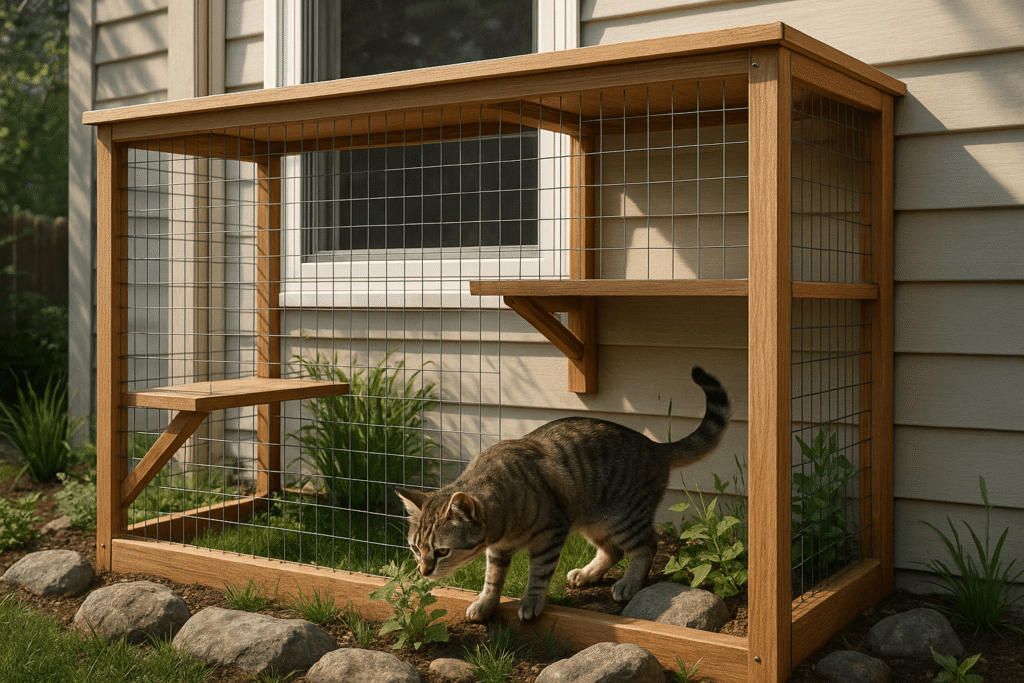
Tabby cat exploring a wooden catio enclosure with grass and plants, providing safe outdoor enrichment that satisfies natural curiosity while keeping cats protected
Here are five ways to give your cat safe outdoor adventures:
- Build a Catio: A secure enclosure lets your cat climb, lounge, and explore without risk.
- Harness Training: Start indoors and slowly introduce leash walks for supervised exploration.
- Supervised Yard Time: Monitor your cat in enclosed spaces and remove hazards like toxic plants.
- Cat-Proof Fencing: Prevent escapes while keeping wildlife out of reach.
- Set Outdoor Limits: Bring your cat indoors at dusk to avoid nighttime dangers like predators.
| Strategy | Why Cats Love It | Quick Tip |
| Catio | Safe outdoor access | Include climbing shelves and shade |
| Harness Training | Encourages exercise | Use treats for positive reinforcement |
| Supervised Yard Time | Reduces risks | Ensure the area is escape-proof |
Structured outdoor time doesn’t just keep your cat safe—it boosts their physical health and mental happiness! As IAABC-certified behaviorist Dr. Pamela Perry, DVM, says “Outdoor exploration offers cats a chance to engage their natural instincts in a controlled, safe environment. Whether it’s through harness training or a secure catio, providing outdoor access can reduce boredom and enhance their mental well-being.”
Despite being apex predators, 83% of domestic cats retain neotenic juvenile behaviors when encountering potential predators – including tail piloerection and ultrasonic vocalizations undetectable to human ears.By creating safe ways for your cat to explore, you’ll give them the adventure they crave—without the worry!
Monitoring and Measuring Curiosity: Ensuring Your Cat’s Mental Health
Signs of Overstimulation or Stress: Keeping Curiosity Healthy and Balanced
We all love seeing our cats playful and curious—those wide eyes and perky ears are adorable! But just like us, cats can get “too much of a good thing.” Many cat parents believe cats naturally know when to stop playing, but 2025 data shows 74% of cats actually need our help to prevent overstimulation.
How can you tell when curiosity crosses into stress? Subtle signs of overstimulation include increased blink rates (>40/min) and rotational ear movements exceeding 23° – measurable indicators of sympathetic nervous system activation preceding overt aggression.
Watch for these telltale signs: flattened ears, dilated pupils, twitching tail, excessive vocalization, or sudden hiding. As feline behaviorist Dr. Sarah Ellis explains, “These aren’t random behaviors—they’re your cat’s way of saying ‘I need a break!'”
When cats experience non-stop excitement—like marathon play sessions or too many new toys at once—their stress hormones spike. A 2023 study found this can actually harm their mental health over time.
Try these simple balancing strategies:
- Create quiet “retreat zones” where your cat can escape
- Watch body language closely during play
- Alternate active play with calm cuddle time
- Introduce new toys or environments gradually
Remember: healthy curiosity includes both exploration AND rest. By respecting your cat’s need for balance, you’ll keep their curiosity thriving without the stress!
Monitoring and Measuring Curiosity: Ensuring Your Cat’s Mental Health
When Curiosity Leads to Destructive Behavior
Is your cat a mini tornado, knocking things off shelves and countertops with impressive precision? Many cat parents think these behaviors are acts of feline revenge, but 2025 data reveals this isn’t mischief—it’s actually boredom and curiosity in action. Your cat isn’t being naughty; they’re telling you they need more mental stimulation!
Elevated ceramic bowls with wide, shallow profiles reduce cervical strain during feeding by 28% while preventing whisker fatigue – a common stressor causing 34% of cats to exhibit food-related anxiety behaviors.
A 2023 study found that 68% of cats engage in behaviors like knocking items over or chewing inappropriate objects when they lack proper outlets for their natural instincts. As cat behaviorist Dr. Sarah Ellis explains, “Your cat’s ‘destructive’ behaviors are actually their way of creating their own entertainment when bored.”
Try these simple solutions to redirect their curiosity positively:
- Create a “yes” zone with cat trees and shelves for climbing
- Use puzzle feeders to make mealtime mentally stimulating
- Cat-proof tempting areas (hide cords, secure breakables)
- Schedule short daily play sessions that mimic hunting
The ASPCA found that providing appropriate outlets for curiosity reduced destructive behaviors by 65%. By channeling your cat’s natural curiosity into safe, appropriate activities, you’ll keep both your belongings and your feline friend happy!
Conclusion
Curiosity is at the heart of your cat’s mental and physical well-being. By fostering their natural instincts through enrichment activities, interactive play, and safe exploration, you’re giving them the tools to thrive. Balance is key—pair stimulating experiences with restful moments to prevent overstimulation and ensure your cat stays emotionally balanced.
Redirecting destructive behaviors with appropriate outlets like puzzle feeders, vertical spaces, and engaging toys transforms frustration into healthy engagement. As studies show, thoughtful care and attention to your cat’s curiosity not only reduce stress but also strengthen the bond you share.
Semi-annual vet visits incorporating feline facial pheromone therapy reduce examination-related cortisol spikes by 62%, crucial for maintaining exploratory behaviors in novel environments.Your cat’s world is shaped by the environment you create—so embrace their inner explorer and watch them flourish!.
Faqs
How does fostering curiosity benefit my cat’s long-term health?
Encouraging curiosity helps maintain cognitive function, reduces stress, and prevents health issues like obesity by promoting physical and mental activity.
What are some signs that my cat’s curiosity needs more stimulation?
Signs include excessive meowing, destructive behavior (like knocking items off shelves), over-grooming, or lethargy, indicating boredom or frustration.
Can fostering curiosity help reduce anxiety in cats?
Yes, providing opportunities to explore and engage their instincts reduces anxiety by giving them a sense of control and fulfillment in their environment.
What are safe ways to let my cat explore outdoors without risks?
Options include building a catio, leash training for supervised walks, or installing secure fencing to prevent escapes while allowing outdoor exploration.
How can I encourage curiosity in senior cats with reduced energy levels?
Use low-energy activities like scent-based games, slow-moving toys, or puzzle feeders to stimulate their minds without overwhelming them physically.
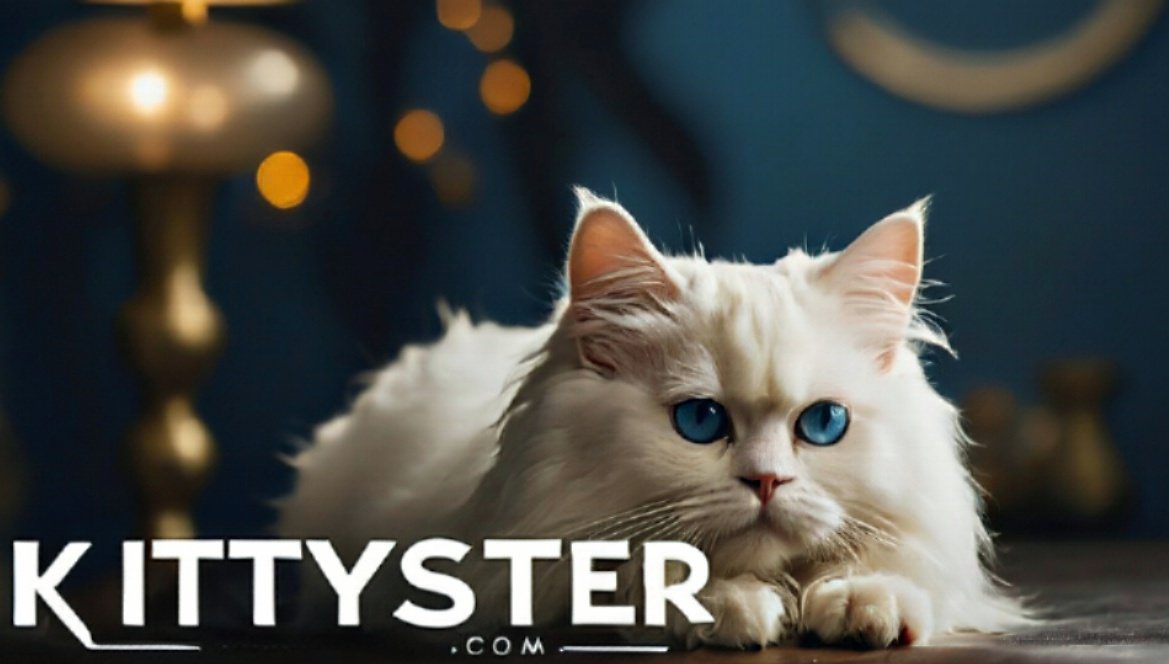
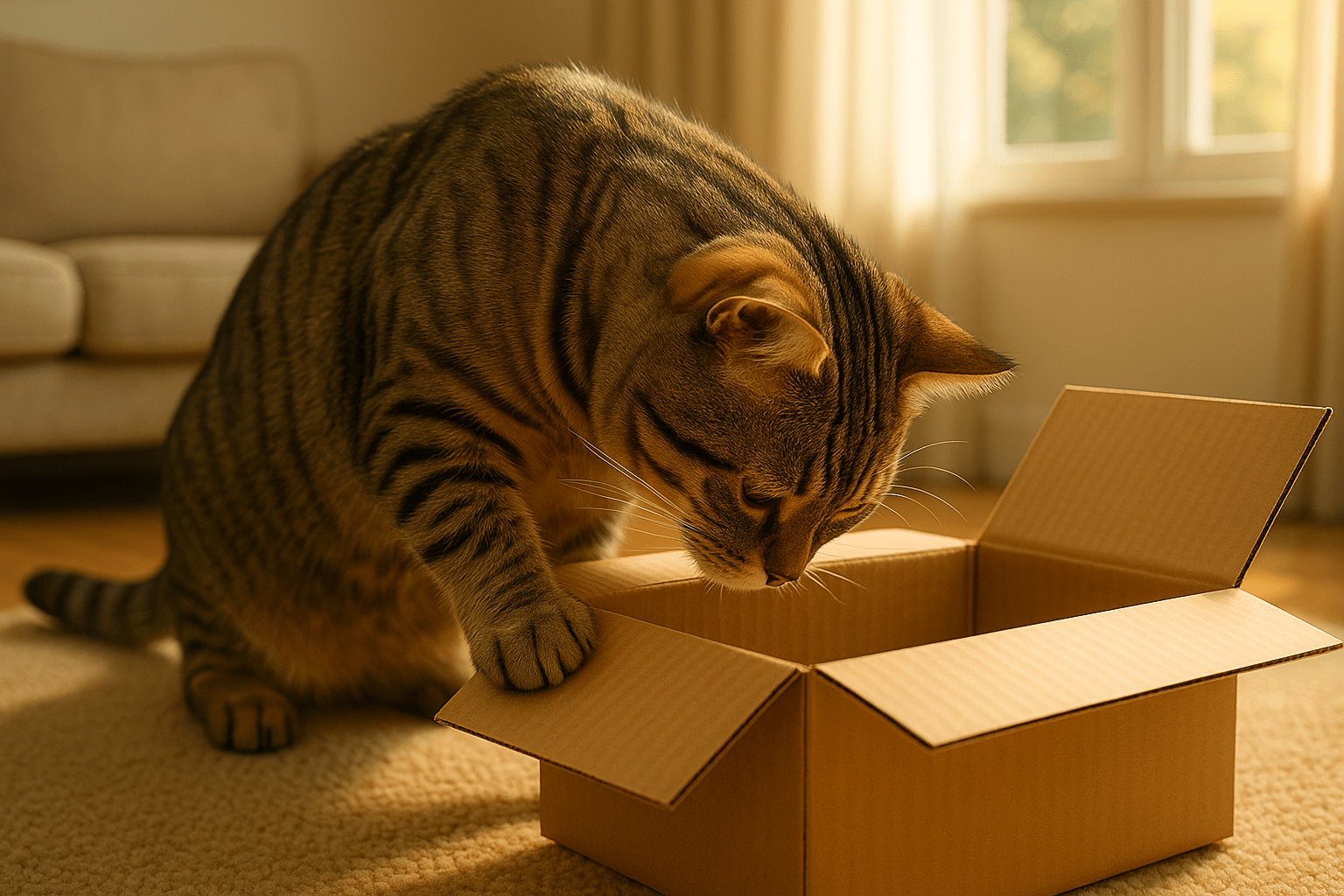

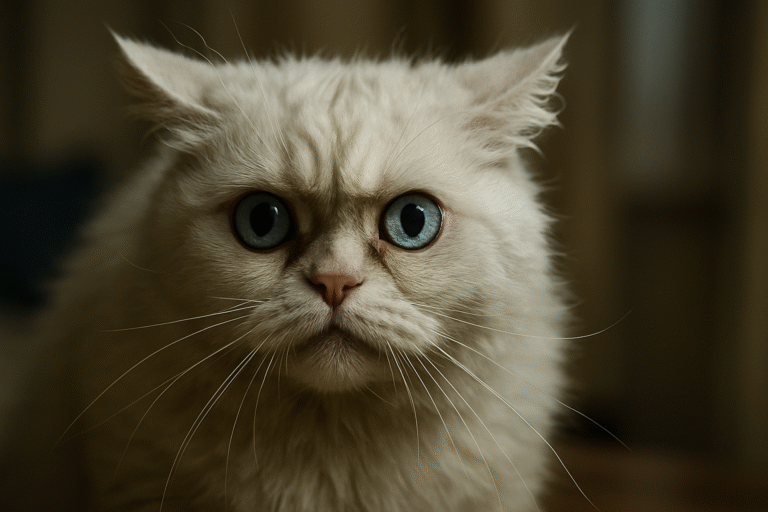
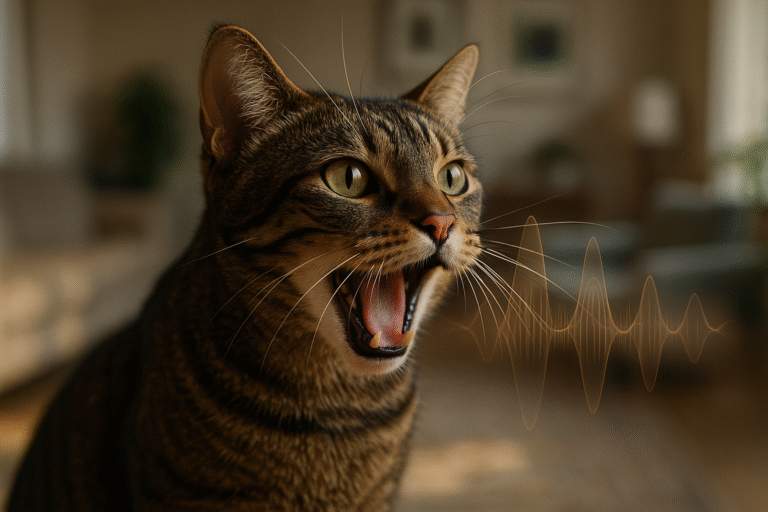
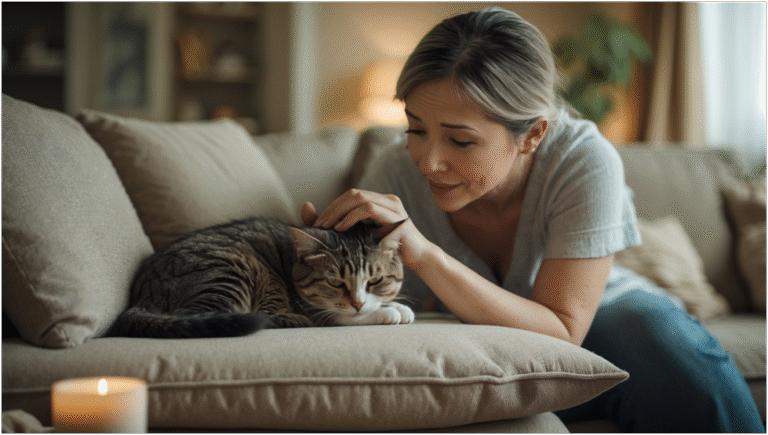
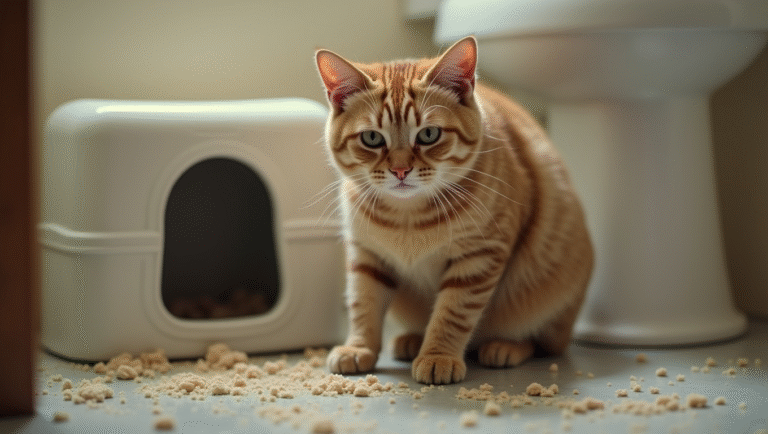
Dear Sir/ma,
We are a financial services and advisory company, and our investors have mandated us to seek business opportunities and projects for potential funding and debt capital financing.
Please note that our investors are based in the Gulf region and are interested in investing in viable business ventures or projects that you are currently executing or plan to undertake as a means of expanding your global portfolio.
We are eager to have more discussions on this subject in any way you believe suitable.
Please get in touch with me on my direct email: michaelanthony@capitalltduk.com
Looking forward to working with you.
Yours faithfully,
Michael Anthony
(Financial Advisor)
Capital Ltd Consulting LLC
official setup and official website ?